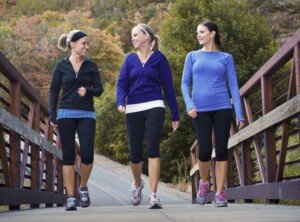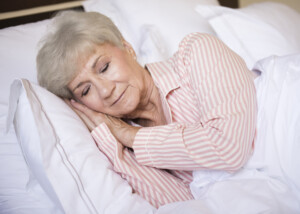If you had to choose between walking and napping to re-energize, which should it be? Forget the power nap; do the power WALK. Everything points to the walking.
“Walking is generally considered the better choice of activity when looking to recharge in the mid-afternoon,” says Supriya Rao, MD, a quadruple board-certified physician with Integrated Gastroenterology Consultants.
“Research has found that a 15 minute walk can be more beneficial than a 10 minute nap to improve alertness and reduce fatigue.
“Walking increases blood circulation, oxygen levels, and endorphin levels to boost the body’s energy.
“Due to the physical movement of walking, it requires more mental engagement than napping, making it a better choice for those looking to recharge their energy levels.”
Let’s say that you feel lethargic and sluggish, and maybe drowsy, as lunchtime at work approaches.
You decide to forego eating and just nap at your desk for 45 minutes.
Your twin in a parallel universe feels the same way but decides to take a brisk walk outdoors.
You nap for 45 minutes, and for much of that you are asleep, and your timer awakens you. How do you feel?
I once worked a job where a man named Steve almost always used lunch time to nap at his desk, arms folded atop it, head buried in arms.
At the end of lunchtime he looked drained and groggy, not re-energized and perky.
Listless employees who had spent some of their lunch break walking outside always returned appearing refreshed.
So how do you feel after that 45 minute nap?
More rejuvenated than your twin who walked for that time?
The walker’s heart will become elevated and pump more blood throughout the body.
The napper’s heart rate and metabolism will slow down. The body will stiffen, being still for 45 minutes, whereas walking will loosen up joints and muscles.
Quite literally, walking will wake you up. Napping will put you to sleep.
After a walk — even for just 15 or 10 minutes — you will feel more ready to jump through some hoops. After a nap, even for 15 minutes, that’s the last thing you’ll want to think about.
With napping, some people get carried away. If the napping is done at home, that 15 minute snooze may eventually turn into a 30 minute nap.
That then becomes 45 minutes. Over time, the person is now taking naps lasting an hour.
On days off from work, one can get into the habit of taking two-hour naps in the middle of the day despite sleeping overnight for eight hours.
Two hours then becomes three. When this person retires, he might by then have developed such a strong napping habit that he sleeps 2-3 hours every afternoon or early evening, despite averaging eight hours of sleep per night.
Too much sleep, and napping gets included in this, is linked to heart disease, diabetes and increased mortality.
Heart disease and diabetes can cause oversleeping.
Researchers do not know which comes first here. Does a disease process (that someone might not even be aware of that’s occurring in their body) cause sleepiness during the day?
Or does the bad habit of excessive napping lead to a disease process?
Obstructive sleep apnea, which many people have yet don’t know it, typically causes daytime drowsiness that’s not remedied with napping.
Some prescription drugs can cause drowsiness as well.
If you can’t get through the day or evening without a nap, it’s important to see a doctor for a thorough checkup.
However, it could also be that you’ve “trained” your body to expect lengthy naps every day, and thus, you feel that your body “needs” them.
Replace some of that napping with a brisk walk and see what happens.
When it comes to napping vs. walking, only one of these improves cardiorespiratory function, bone health, lowers blood pressure and helps keep the body from getting stiff: brisk walking.
 Dr. Rao is board certified in internal medicine, gastroenterology, obesity medicine and lifestyle medicine. She is managing director of Integrated Gastroenterology Consultants, and director of Medical Weight Loss at Lowell General Hospital. She also runs the motility program, which focuses on disorders of the esophagus, irritable bowel syndrome and anorectal disorders.
Dr. Rao is board certified in internal medicine, gastroenterology, obesity medicine and lifestyle medicine. She is managing director of Integrated Gastroenterology Consultants, and director of Medical Weight Loss at Lowell General Hospital. She also runs the motility program, which focuses on disorders of the esophagus, irritable bowel syndrome and anorectal disorders.
 Lorra Garrick has been covering medical, fitness and cybersecurity topics for many years, having written thousands of articles for print magazines and websites, including as a ghostwriter. She’s also a former ACE-certified personal trainer.
Lorra Garrick has been covering medical, fitness and cybersecurity topics for many years, having written thousands of articles for print magazines and websites, including as a ghostwriter. She’s also a former ACE-certified personal trainer.
.


























